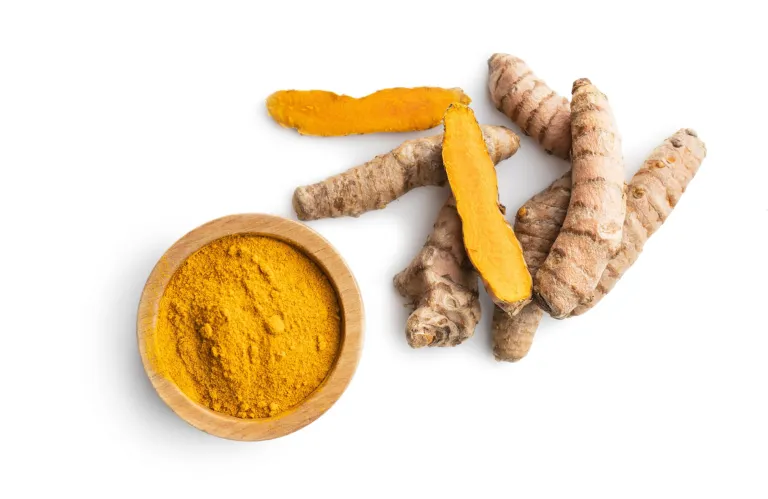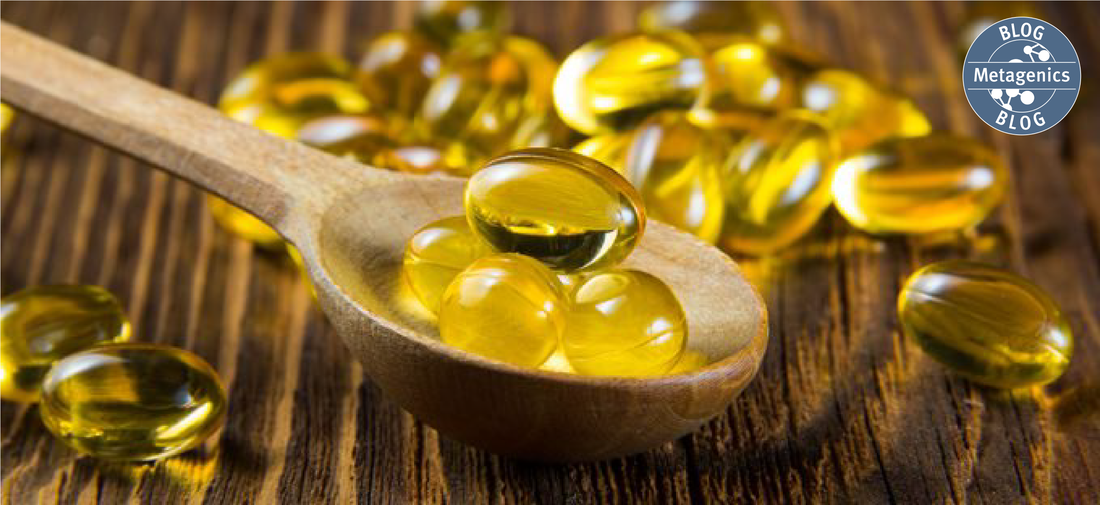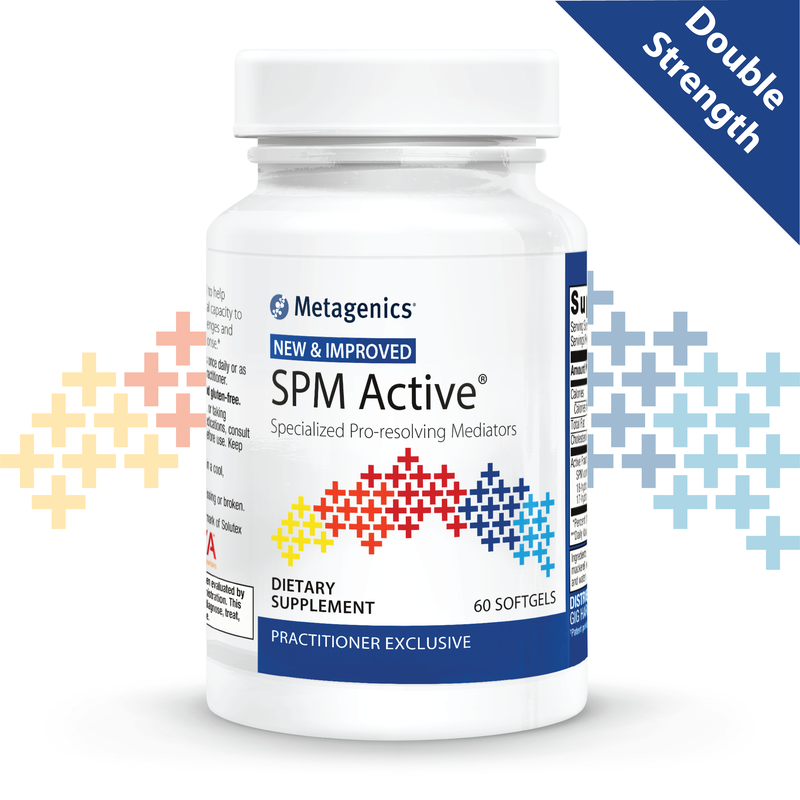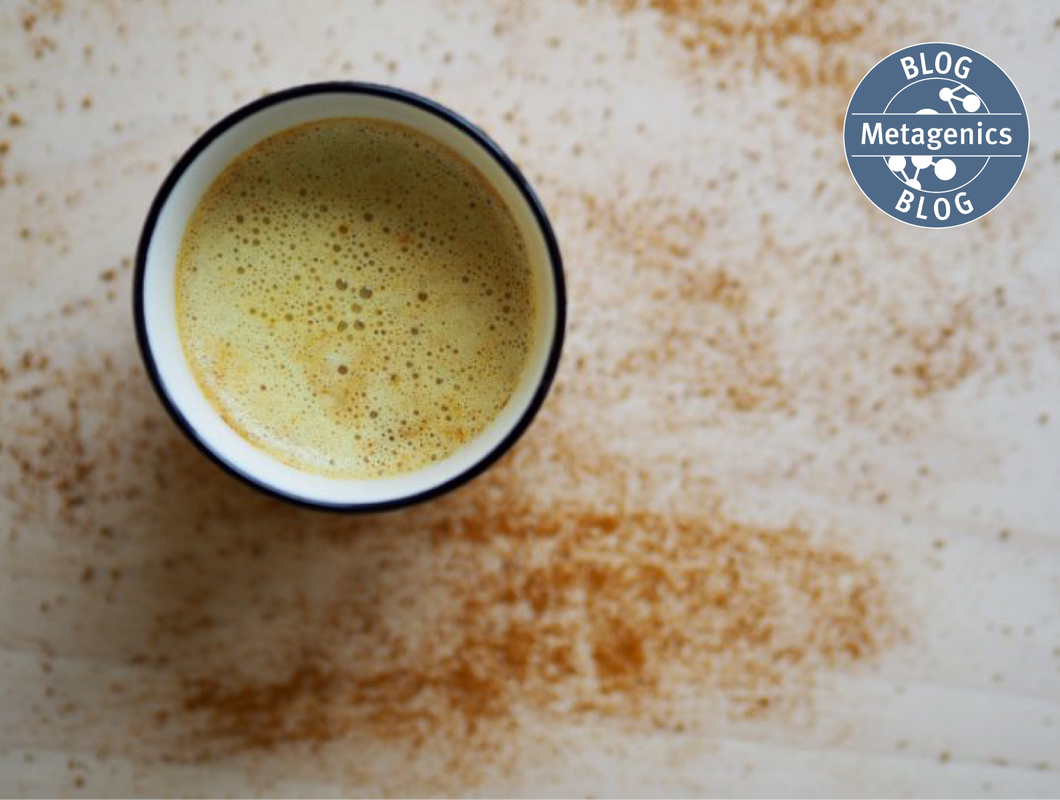|
Written by Gauri Yardi
What do a cold, depression, and hayfever have in common? If you said “they’re all health conditions”, or even “they’re all inflammatory health conditions”, you would be right. However, there is something more unusual that connects the three. Give up? All three are influenced by your gut microbiome, the microorganisms that call your digestive tract ‘home’. You may be wondering how these tiny gut inhabitants could have any bearing on your throat, joints, and/or brain. In this article, we will find out how your gut influences these seemingly unrelated areas, as well as how to prevent your gut from making you sick, sad or inflamed. Cold-Busting Colleagues: Your Gut and Immune System Work Hand-in-Hand Your immune system’s main job is to defend you from pathogens (disease-causing microorganisms). Since pathogens are typically inhaled or swallowed, it makes sense for the immune system to concentrate on your respiratory and digestive tracts. In fact, 70% of the immune system is housed in your gut.1 It lies beneath the lining of your intestines, ready to spring into action if a pathogen enters your gut, to try to prevent you getting sick. By contrast, some bacteria have a positive influence on your immune system. A healthy gut microbiome interacts with the intestinal immune system in ways that increase your body’s immune defences. However, a microbiome out of balance, which does not contain high levels of beneficial bacteria, is less likely to help you resist infection, including colds and flu (click here to read more about what might upset your gut microbiome). Fortunately, certain strains (types) of probiotic bacteria improve the bacterial balance in your gut, with beneficial flow-on effects for your immune system. Lactobacillus rhamnosus (LGG®),2 Lactobacillus paracasei (8700:2) and Lactobacillus plantarum (HEAL 9)3 all stimulate the immune system and improve resistance to infection. In fact, the combination of 8700:2 and HEAL 9 has been shown to reduce the severity and duration of common cold symptoms.4 If you struggle with frequent colds and flu, working with a natural healthcare Practitioner to strengthen your gut microbiome may help. A healthy gut microbiome interacts with the intestinal immune system in ways that increase your body’s immune defences. However, a microbiome out of balance, which does not contain high levels of beneficial bacteria, is less likely to help you resist infection, including colds and flu (click here to read more about what might upset your gut microbiome). Jumping at Shadows: The Overactive Immune System Another possible consequence of poor gut bacterial balance is inflammation, a key feature of autoimmune (e.g. rheumatoid arthritis) and allergic disease (e.g. hayfever). In these conditions, the immune system misidentifies harmless substances as threats, and launches an immune response against them. The resulting inflammation creates the symptoms you associate with allergy and autoimmunity, e.g. a blocked nose and watering eyes in hayfever, or joint pain and swelling in rheumatoid arthritis. Fortunately, certain probiotic strains, namely LGG® and Lactobacillus paracasei (LP-33®), can stimulate your immune system to produce anti-inflammatory compounds, reducing inflammation and symptoms. For example, research in hundreds of people has shown that LP-33® significantly improves hayfever symptoms.5,6 Interestingly, LGG®, when taken during pregnancy and breastfeeding, can reduce the incidence of eczema (an inflammatory skin disease) in children, by supporting the healthy development of the gut microbiome and the immune system.7 If your immune system is in overdrive, make an appointment with a natural healthcare Practitioner to help bring it back into line. Gut Feelings: How Bacteria Make or Break Your MoodMore and more research is supporting an unexpected cause of depression: inflammation. Specifically, inflammation throughout the body (known as systemic inflammation), and even inflammation of the brain, may contribute to depression. As you have already learned, the interaction between bad gut bacteria and the immune system can cause inflammation. However, did you know that the inflammatory chemicals released within your gut can also cause an inflammatory response in your brain? If gut inflammation can influence mood, you may be wondering if specific probiotics can improve mood or reduce the symptoms of depression. While this is a hot topic in scientific research, we do not currently know which specific probiotic strains can influence mood. However, a good start in supporting healthy mood is taking steps to reduce inflammation in the body. What we do know is maximising your gut health, e.g. by eating plenty of fibre-rich wholefoods (to provide your gut bacteria with their preferred food), can also increase the numbers of good bacteria, which is the best way to influence your mood via your gut. If your bacterial balance has become disrupted due to a stomach bug, antibiotics, or other causes, strains which support beneficial bacteria, such as LGG®, Saccharomyces cerevisiae var. boulardii, and Bifidobacterium animalis ssp lactis (BB-12®) may help improve the composition of your gut microbiome. Great Health is All in the Gut By interacting with your immune system, your gut bacteria influences your ability to resist infection, reduce inflammation, and maintain a healthy mood. If you are wondering whether your gut may be making you sick, sad or inflamed, make an appointment with a natural healthcare Practitioner today. Together, you can assess your bacterial balance, and make a plan to improve your specific symptoms. References1 Gill HS. Probiotics to enhance anti-infective defences in the gastrointestinal tract. Best Pract Res Clin Gastroenterol. 2003;17(5):755-773. doi: 10.1016/s1521-6918(03)00074-x. 2 Feleszko W, Jaworska J, Rha RD, Steinhausen S, Avagyan A, Jaudszus A, et al. Probiotic-induced suppression of allergic sensitization and airway inflammation is associated with an increase of Tregulatory-dependent mechanisms in a murine model of asthma. Clin Exp Allergy. 2007;37(4):498-505. doi: 10.1111/j.1365-2222.2006.02629.x. 3 Lavasani S, Dzhambazov B, Nouri M, Fåk F, Buske S, Molin G, et al. A novel probiotic mixture exerts a therapeutic effect on experimental autoimmune encephalomyelitis mediated by IL-10 producing regulatory T cells. PLoS One. 2010; 5(2): e9009. doi: 10.1371/journal.pone.0009009. 4 Berggren A, Lazou Ahrén I, Larsson N, Önning G.. Randomised, double-blind and placebo-controlled study using new probiotic lactobacilli for strengthening the body immune defence against viral infections. Eur J Nutr 2011; 50(3):203-210. doi: 10.1007/s00394-010-0127-6. 5 Costa DJ, Marteau P, Amouyal M, Poulsen LK, Hamelmann E, Czaaubiel M, et al. Efficacy and safety of the probiotic Lactobacillus paracasei LP-33 in allergic rhinitis: a double-blind, randomised, placebo-controlled trial (GA2LEN) study. Eur J Clin Nutr. 2014 May;68(5):602-7. doi: 10.1038/ejcn.2014.13. 6 Peng G-C, Hsu C-H. The efficacy and safety of heat-killed Lactobacillus paracasei for treatment of perennial allergic rhinitis induced by house-dust mite. Pediatr Allergy Immunol. 2005 Aug;16(5):433-438. doi: 10.1111/j.1399-3038.2005.00284.x. 7 Kalliomäki M, Salminen S, Arvilommi H, Kero P, Koskinen P, Isolauri E. Probiotics in primary prevention of atopic disease: a randomised placebo-controlled trial. Lancet. 2001;357(9262):1076-9.
0 Comments
By Michael Stanclift, ND The rich orange color of turmeric is a signature of this powerfully healthy Indian spice. Even if you don’t dig the flavour of it in food, you might take turmeric in one of its many supplement forms for health benefits. Curcuma longa is the Latin name for turmeric and also hints at the name of the most talked about molecule in it, curcumin. Many people use “turmeric” and “curcumin” interchangeably, but surprisingly there isn’t that much curcumin in turmeric—curcumin makes up only about 3% of dried turmeric.1 But when we’re talking about the health benefits of turmeric, we’re usually really referring to its famous derivative, curcumin, which is the most studied component. So why has this orange molecule become the darling of healthy living? Curcumin offers a host of health perks, is safe, and is well-tolerated by nearly every patient I’ve recommended it to. Many of the effects essentially boil down to curcumin’s ability to function as an antioxidant or balance the immune response to cellular injury.2 It can improve markers of oxidative stress and increase circulating antioxidants, such as superoxide dismutase, sometimes referred to as SOD.2 Curcumin can block the activation of NF-κB, which is involved in the immune response and can lead to undesirable effects.2 So how are these effects meaningful? Here are some of the research-backed ways I’ve utilized curcumin with the patients I’ve seen:
Before you get started There are a few things you should know about curcumin before you run out and start taking it. First, curcumin isn’t very well absorbed, so it is often combined with other natural substances to help improve absorption. I have used it in formulations where it is combined with a black pepper extract (piperine), which can increase the availability about 20 times, and a fenugreek extract, which can increase the availability about 45 times.2,6 The second thing to know is that while curcumin has a great safety record, there have been cases of people taking a curcumin supplement experiencing liver injury.7,8,9 There’s some speculation that the effect may have come from another ingredient, not the curcumin, and many of the products involved contained piperine, the black pepper extract.7,9,10 In response to these concerns, I found a 90-day study of healthy volunteers who were investigated for signs of toxicity when the subjects were given highly bioavailable curcumin (with fenugreek extract).11 With this formulation no adverse effects were noted in the study, and liver enzymes remained within the normal range.11 There are two morals to this story: Always look for manufacturers with a solid reputation and transparent quality testing for their products, and seek the guidance of an experienced healthcare provider to ensure you’re taking the proper precautions and monitoring. In healthy individuals, doses between 150-1,500 mg have been studied and appear to be beneficial, well-tolerated, and safe.5 The European Food Safety Authority (EFSA) is a bit more conservative and established an acceptable daily intake (ADI) of curcumin at 3 mg/kg/day.9 For readers in the United States, that translates to roughly 1.36 mg/lb/day or a dose equivalent to about 205 mg/day of curcumin per day for a 150-pound person. Turmeric, along with its most active component curcumin, is clinically versatile and offers a wide range of health benefits. These qualities make it an attractive candidate to include in your healthy lifestyle. Ask your healthcare provider if you might benefit from turmeric or curcumin! References:
Inflammation plays a key role in the immune system.1 This physiological process, the inflammatory response, is the body’s way of protecting itself from infection due to bacteria, viruses, fungi, and other foreign substances.2 Inflammation plays a key role in the body’s natural healing process.1,2
While inflammation is natural—it is necessary in many cases—not all inflammatory responses are created equal.2 Sometimes the body might be inflamed when there are no foreign invaders the immune system needs to fight.2 Far too often, refined sugar is partly responsible.1 So if you have a serious sweet tooth and experience symptoms like redness, joint or muscle stiffness, fatigue, and loss of appetite, you may have fallen victim to the sugar-inflammation connection.1 How does added sugar cause inflammation? Consistently eating high quantities of refined sugar can cause chronic, low-grade inflammation.1 This may lead to serious health issues like cardiovascular challenges, weight gain, or allergies.1,2 Specifically, added sugar promotes the following changes in the body:
While the government recommends that added sugar and solid fats combined account for no more than 5% to 15% of one’s total caloric intake, 13% of US adults’ total calories come from processed sugar.4 All of the above symptoms are linked to chronic, low-grade inflammation. That said, it’s worth noting that added sugar consumption alone is unlikely to cause severe inflammation; often, there are a number of factors at play.1 How can you support a healthier inflammation response? Lifestyle changes can address some of the symptoms mentioned above.1 Examples include: eliminating junk food from your diet, reducing your general stress levels, and so much more.1 Regardless, you will want to take stock of where you are at and make a conscious effort to improve your health.1 Read through the following list to see if there are areas where you can enhance your lifestyle:1,5
Returning to the topic of sugar, there’s no need to give up the sweet stuff entirely. You might consider substituting processed sweets with naturally sweetened alternatives in order to reduce your inflammatory symptoms.1 The next section explains how natural sugars like honey and maple syrup may decrease inflammation. Natural sugars and inflammation Chances are you’re familiar with refined sugar and how it differs from the natural alternatives. Where refined sugar is separated from its source, reconfigured, and then added as a sweetener, natural sugar occurs—you guessed it--naturally in foods.1 This means it is sourced directly from a whole plant source.1 Whole foods like fruit and dairy products feature varying amounts of fructose and lactose—yet they’re also full of fiber, protein, and nutrients, so the body is equipped to process them efficiently.1 Natural sugar is not associated with inflammation.1 It is absorbed more slowly by the body, which helps to minimize blood sugar spikes.1 What does this mean? The verdict is that consuming natural sugar, within moderation, is just fine from a health and wellness standpoint.1 Added sugar, alternatively, should only be eaten rarely and in limited quantities.1 Please contact your doctor if your inflammatory symptoms persist even after eliminating refined sugar from your diet. For more information on nutrition and general wellness topics, please visit the Metagenics blog. References
Submitted by the Metagenics Marketing Team BY RUTH KIRK-GARCIA | IMMUNE, INFLAMMATION | 0 COMMENT
Inflammation is the body’s initial response to cell damage and is designed to protect it from infection or further injury. Like day and night, the inflammatory process is a cycle defined by two halves – initiation and resolution. The initiation phase begins with a local dispatch of immune cells at the site of damage, which sounds the alarm, igniting inflammation within the surrounding tissue. Once the threat of infection or damage is neutralized, the resolution response is activated, calming the initial phase of inflammation and facilitating cellular repair and recovery. Unresolved Issues The transition between initiation and resolution is required to complete the cycle of inflammation and to promote healing. However, for some people, this transition fails to occur, leading to a chronic, sustained inflammatory response. This keeps the body in the initiation phase where it cannot resolve inflammation; like a loud alarm system with a broken ‘deactivate’ button. The result? A state of unremitting inflammation that keeps the body in a cycle of tissue damage, preventing recovery. However, for some people, this transition fails to occur, leading to a chronic, sustained inflammatory response. This keeps the body in the initiation phase where it cannot resolve inflammation; like a loud alarm system with a broken ‘deactivate’ button. A Remedy for Resolution If you or someone you know suffers from an inflammatory condition (such as arthritis), you will no doubt be aware of the frustration that comes from persistent symptoms, despite your efforts to find a solution. You may be doing all the right things, taking the right medications, taking steps to improve your diet, exercise and sleep, while proactively managing your stress. However, if the resolution of inflammation is impaired, you will continue to experience symptoms, as the inflammatory response cannot be ‘deactivated’. It’s no wonder that cutting-edge research in the field of inflammation resolution is turning heads, particularly in regards to a group of compounds called specialized pro-resolving mediators (SPMs). Send in The SPMs As their name suggests, SPMs trigger or ‘deactivate’ the resolution phase of inflammation in the body,[1] which are produced from omega-3 fatty acids, (EPA) and docosahexaenoic acid (DHA).[2] Like a half-time speech that inspires a triumphant victory, SPMs motivate the immune system to promote resolution. In the initiation phase, white blood cells are known as macrophages actively destroy problem microbes and clear the excess of immune cells released during inflammation. However, in the resolution phase, SPMs reprogram these macrophages, switching their game plan from offence to defense to help regenerate and repair damaged tissue.[3] This results in resolution, relief and recovery. So why, if the body can produce SPMs, does inflammation remain unresolved? Research tells us that the body’s ability to produce SPMs is lower in conditions involving chronic inflammation,[4] meaning that in highly inflamed individuals, the ability to resolve inflammation is likely to be impaired. Some pharmacological anti-inflammatories (even some used to treat inflammation) may also prevent SPM activity,[5] as they inhibit inflammation preventing the body’s ability to activate the resolution phase. This is why supplements providing SPMs are an exciting development for chronic inflammation sufferers; as restoring SPM levels goes beyond the effects of conventional treatments to actively promote resolution and full circle recovery. This is why supplements providing SPMs are an exciting development for chronic inflammation sufferers; as restoring SPM levels goes beyond the effects of conventional treatments to actively promote resolution and full circle recovery Viva la Resolution! Heralding a new era of healing, SPMs offer a beacon of hope for those suffering from chronic inflammation, offering a new solution for achieving resolution! For more information on natural management of inflammation, read on by clicking here. However, if you are ready to experience the resolving effects of SPMs, contact a Practitioner near you today. 1] Serhan CN, Hong S, Gronert K, Colgan SP, Devchand PR, Mirick G et al. Resolvins: a family of bioactive products of omega-3 fatty acid transformation circuits initiated by aspirin treatment that counter proinflammation signals. J Exp Med. 2002 Oct 21;196(8):1025-37. 2] Hirahashi J. Omega-3 polyunsaturated fatty acids for the treatment of IgA nephropathy. J Clin Med. 2017 Jul;6(7):70. doi: 10.3390/jcm6070070. 3] Spite M, Clària J, Serhan CN. Resolvins, specialized proresolving lipid mediators, and their potential roles in metabolic diseases. Cell Metab. 2014 Jan 7;19(1):21-36. doi: 10.1016/j.cmet.2013.10.006. 4] Barden AE, Mas E, Croft KD, Phillips M, Mori TA. Specialized proresolving lipid mediators in humans with the metabolic syndrome after n-3 fatty acids and aspirin. Am J Clin Nutr. 2015 Dec;102(6):1357-64. doi: 10.3945/ajcn.115.116384. 5] Chiang N, Serhan CN. Structural elucidation and physiologic functions of specialized pro-resolving mediators and their receptors. Mol Aspects Med. 2017 Dec;58:114-129. doi: 10.1016/j.mam.2017.03.005. Inflammation is a popular buzzword these days. But what causes it exactly? How can you know you have it, and if it’s something your body does naturally to help you heal, then what’s the big deal?
We’ve all been there: It’s late, you’re tired, and you don’t feel like turning the lights on just to cross a room…then bam! Shin finds coffee table. The resulting egg-shaped lump is formed when blood flow increases to the area, bringing with it neutrophils and macrophages as part of the immune response. Symptoms of this acute inflammation are typical: redness, swelling, heat, and pain. The swelling that occurs as fluid collects in the area is also called “edema.” The symptoms last for a limited period of time—minutes to days—as the body heals itself. Acute inflammation vs. chronic inflammation When the body isn’t given enough time, or if the body is unable to resolve the immune response due to deficiency of certain nutrients, it can lead to chronic inflammation. This can also be caused by untreated infectious pathogens such as bacteria or viruses, as well as the adverse effects of long-term exposure to pollutants or chemicals, including smoking.1,2 Stress and obesity are also known factors that lead to chronic inflammation.3,4 Common symptoms of chronic inflammation include:
What can we do?While acute inflammation is one way your body can heal itself, chronic inflammation should be avoided, as a prolonged inflammatory response can cause damage to healthy cells and tissue. Consider adopting a few simple ways to decrease inflammation. If you have been experiencing the symptoms described herein and are concerned you may have chronic inflammation, make an appointment with your healthcare practitioner. This content is not intended as a substitute for professional medical advice, diagnosis, or treatment. Individuals should always consult with their healthcare professional for advice on medical issues. References:
Specialized pro-resolving mediators (SPMs) are a way to help support the body’s natural ability to resolve physical stress.1 While the body can make SPMs naturally, supplementing with exogenous SPMs may help facilitate the body’s natural resolution process and completion of its response to physical challenges.2,3* Metagenics, in collaboration with world-renowned leaders in the field of resolution physiology and other SPM experts, set the standard for defining SPM oils based on activity for use in nutraceutical formulas. But where do these SPMs come from? From the first drop of marine oil through a specialized fractionation protocol and creation of the finished product, Metagenics follows a stringent, patent-pending process to create SPM Active®. The SPM fractionation process: SPM Active is developed through an advanced, patent-pending fractionation process which Metagenics exclusively brings to practitioners. SPM Active is a fraction produced from a high-quality marine oil. This fraction contains standardized levels of 17-HDHA and 18-HEPE, which can lead to the formation of resolvins, an important group of SPMs, in the body. The SPM Active fraction has also been shown to be bioactive and support the existing resolution mechanisms of the body.* While SPMs are sourced from marine lipids, they are not the same as fish oil. In fact, work done during the development of SPM Active shows that fractions, from the same marine oil starting point, behave differently—not all are pro-resolving, and some fractions may have the opposite effect.4 This makes it essential to test and understand the bioactivity of SPM-rich oils. Additionally, even though EPA and DHA are the precursors of SPMs, they do not have pro-resolving properties of SPMs.1 EPA and DHA require multiple downstream enzymatic conversions to form 17-HDHA and 18-HEPE, which are further converted into specialized pro-resolving mediators. References
Introducing SPM Active
New & Improved SPM Active New & Improved delivers a greater concentration and dosing size of specialized pro-resolving mediators (SPMs) compared to the previous formula What has Changed? Double the concentration of 18-HEPE and 17-HDPA as compared to original SPM Active. Softgel size is now double that of the original SPM Active. What are the benefits for your patients? Greater concentration and dosing size facilitates patient compliance. Supplementing with SPMs may help facilitate the body's natural resolution process What hasn't changed? The price Why Metagenics SPM Active? It offers a targeted nutritional approach that is designed to boost the body’s natural capacity to respond to physical stress and promote resolution. Study in research models suggests that a short-term, high-fat diet may negatively impact natural production of specialized pro-resolving mediators. Clinical case study results with SPM Active show significant improvement in biomarkers of activated immune function, increased quality of life, and reduced interference of symptoms during general activity. Specialized pro-resolving mediators may help promote resolution of physical stress after an episode of strenuous physical exertion. Metagenics set the standard for delivering SPMs based on activity for use in nutraceutical formulas in collaboration with world-renowned SPM experts. by Whitney Crouch, RDN, CLT
What is Golden Milk? Popularized across social media, golden milk is a cross-cultural drink originating in Asian countries and consumed for its anti-inflammatory properties and pungent flavor. Also known as “golden milk latte” or “turmeric tea”, golden milk is made with freshly grated or ground turmeric, a pinch of freshly ground pepper, honey or lemon to taste, and hot water, milk, or dairy alternative.1-2 The addition of freshly grated or ground ginger adds extra flavor and additional anti-inflammatory characteristics, with cinnamon, cardamom, cloves and nutmeg rounding out the flavor.1-2 The Golden Milk “MVP”: Turmeric While turmeric is the star of the show with its golden color and unique flavor, golden milk is a purposefully designed elixir including ingredients that aid in the absorption and delivery of turmeric’s polyphenolic compound, curcumin, the primary curcuminoid found in turmeric. Curcumin is a poorly absorbed compound on its own, but the addition of piperine, the active ingredient in black pepper, increases the absorption by approximately 2,000%.3 Another well-designed feature of the golden milk beverage involves the use of whole fat milk or added fat (such as coconut milk or oil) to facilitate improved bioavailability of the fat-loving (lipophilic) curcuminoid phenols; leveraging a lipophilic design has been shown to allow for greater bioaccessibility of curcuminoids.4 Golden Milk and Arthritis Arthritis is an inflammatory condition characterized by swollen, painful joints. It affects children and adults and presents in many forms – autoimmune rheumatoid arthritis, osteoarthritis, and infectious arthritis, to name a few.5-6 While each condition has a different etiology, the clinical presentation includes stiff joints, muscle aches and pains, fatigue, rigidity, and inability to use the affected limb(s).5-6 Sometimes called degenerative joint disease, osteoarthritis (OA) is the most common chronic condition of the joints, affecting approximately 27 million Americans.5 OA can affect any joint, but it occurs most often in knees, hips, lower back and neck, small joints of the fingers and the bases of the thumb and big toe.5 In OA, the cartilage breaks down, causing pain, swelling and problems moving joints.5 Rheumatoid arthritis is an autoimmune disease in which the body’s immune system – which normally protects its health by attacking foreign substances like bacteria and viruses – mistakenly attacks the joints. Since this is a systemic condition, it may also affect organ and body systems.6 Turmeric (Curcuma longa) is a rhizomatous perennial plant of the ginger family.7 Curcumin, the medicinal compound found in turmeric root, has been used for thousands of years, but has only recently been studied extensively. A curcuminoid polyphenol (also called diferuloylmethane), curcumin has been used medicinally in Asian countries for its antioxidant, anti-inflammatory, anti-microbial, anti-mutagenic, and anti-cancer properties.8 Typical anti-inflammatory medications are successful in blocking the pro-inflammatory COX pathway, while curcumin’s benefits are seen via inhibiting actions of both COX and LOX enzymes, prostaglandins, and leukotrienes.9 Unlike many non-steroidal anti-inflammatory drugs (NSAIDs), curcumin does not irritate the gastric lining when taken with food.10 Recent studies have examined the role of curcumin in the gut, specifically its interaction with the gut microbiota. Highly concentrated amounts of curcumin have been used as a standalone or adjunct approach to many clinical conditions. Until recently the dose of curcumin ingested through daily food intake and its clinical relevance was not well understood. Oral administration of curcumin is beneficially involved in many health processes, including those underlying osteoarthritis and rheumatoid arthritis.11 Limited bioavailability and inability to detect curcumin in circulation or target tissues has hindered the validation of a causal role, however studies suggest the relationship between curcumin, microbiota, and gut tissue to be at the base of improved overall health and reduced inflammation with dietary intake of turmeric.12 In their review of current studies, Gosh, et al. theorize that the mechanism underlying the attenuation of metabolic dysfunction is a curcumin-mediated decrease in the release of gut bacteria-derived lipopolysaccharide (LPS) into blood circulation, by maintaining the integrity of the intestinal barrier function.12 In this role, lacking extensive systemic circulation, curcumin reduces the release inflammatory LPS molecules, thereby protecting several layers of the intestinal barrier.12 While the data on curcumin’s role in supporting healthy joints and combating arthritis is growing, it should be noted that the clinically effective doses studied range from 1000-1500 mg/day of curcuminoids. The typical golden milk recipe includes 0.5-3 teaspoons of turmeric, or approximately 3-9 grams of ground turmeric root.1-2,14 With the lower bioavailability of dietary curcumin, and the curcumin content of the turmeric root averaging 3.14% by weight,13 actual curcuminoid intake per golden milk drink ranges from 0.05-0.28 mg when preparing it with 0.5-3 teaspoons of turmeric (based on simple math). Golden milk tea is a wellness-promoting drink that should be incorporated into a nutrient dense, anti-inflammatory diet and lifestyle. While higher, more targeted doses of curcumin may be necessary to promote clinically significant changes in arthritic pain outcomes, the sum of all diet and lifestyle parts should be considered when approaching inflammation from a more natural, holistic perspective. References:
Whitney Crouch, RDN, CLT Whitney Crouch is a Registered Dietitian with a BS in Clinical Nutrition from the University of California, Davis. She has over 10 years of experience across multiple areas of dietetics, specializing in integrative and functional nutrition and food sensitivities. When she’s not writing about nutrition or educating others, she’s spending time with her husband and young son. She’s often found running around the bay near her home with the family’s dog or in the kitchen cooking up new ideas to help her picky eater expand his palate. Golden Fusion is a modern take on the centuries-old golden milk recipe that is both great-tasting and convenient. Golden Fusion features CurQFen - a highly bioavailable form of curcumin with fenugreek, along with grass-fed collagen peptides.
What is Golden Milk? Popularized across social media, golden milk is a cross-cultural drink originating in Asian countries and consumed for its anti-inflammatory properties and pungent flavour. Also known as “golden milk latte” or “turmeric tea”, golden milk is made with freshly grated or ground turmeric, a pinch of freshly ground pepper, honey or lemon to taste, and hot water, milk, or dairy alternative. The addition of freshly grated or ground ginger adds extra flavour and additional anti-inflammatory characteristics, with cinnamon, cardamom, cloves and nutmeg rounding out the flavour. Why Golden Fusion?
The Golden Milk: Turmeric While turmeric is the star of the show with its golden colour and unique flavour, golden milk is a purposefully designed elixir including ingredients that aid in the absorption and delivery of turmeric’s polyphenolic compound, curcumin, the primary curcuminoid found in turmeric. Curcumin is a poorly absorbed compound on its own, but the addition of piperine, the active ingredient in black pepper, increases the absorption by approximately 2,000%. Another well-designed feature of the golden milk beverage involves the use of whole fat milk or added fat (such as coconut milk or oil) to facilitate improved bioavailability of the fat-loving (lipophilic) curcuminoid phenols; leveraging a lipophilic design has been shown to allow for greater bio-accessibility of curcuminoids. How To Enjoy Golden Fusion: Mix one scoop with 150ml of hot water or your favourite milk (cow's, coconut, or almond) for a great-tasting and comforting way to supplement your diet with curcumin and collagen peptides. Frequently Asked Questions... What’s the Ancient Secret of Golden Milk? With roots in traditional Chinese and Indian recipes, golden milk dates back thousands of years, and is used within the ancient branch of Indian medicine known as Ayurveda as a nourishing, delicious tonic that supports the mind and body in several ways. The main ingredient in golden milk is turmeric, which gives it a beautiful yellow colour and healing benefits. Traditionally used to impart colour and flavour to Indian curries, the health benefits of turmeric are well-documented and researched. These include anti-inflammatory properties and support of detoxification, as well as the potential to improve cognitive function, blood sugar balance, joint health, and more. What is the source is of our golden fusion collagen? The source is grass-fed bovine collagen. What is the type of collagen used?
Why does Metagenics list “Predominantly Grass-Fed” Collagen Peptides? Grass-Fed designation is often desirable because some experts believe that these cows may deliver greater nutritional benefits. However, labeling grass-fed without qualifying with “predominantly” would be is false and misleading. The majority of cows are not exclusively grass-fed because they often eat other food, such as grain, when weather is bad and there is no grass to eat. Many other companies and suppliers do not disclose this information. We pride ourselves on quality and transparency and will continue to set the standard for clear and accurate labelling. What’s Eating You? Feeling overly tired, bloated, or achy? When dealing with these often stress-related concerns, there are a few questions you should ask yourself: Am I eating well? Am I getting enough sleep? Do I drink enough water and get enough exercise? A healthy body handles daily stress better while an unhealthy lifestyle and daily stress can contribute to a deeper issue—chronic inflammation. Inflammation is the body’s natural response to fighting off potential health threats, but unhealthy lifestyle choices can stunt the resolution of your immune response. In fact, chronic low-grade inflammation is often related to common chronic illnesses. But here’s the good news: There are a few ways you can help resolve your body’s inflammation response—starting today! 1. Ditch That Diet Unfortunately, many of us do not receive our fair share of nutrients from food. You may feel tired and overworked, and rather than taking the time to prepare a healthy, well-balanced meal, you may often resort to convenient inflammatory trigger foods that are lacking in nutrients: refined starches, high-fat and processed red meats, fried foods, dairy, etc. These may cause an activation of the innate immune system and lead to excessive production of pro-inflammatory cytokines. It’s time to break the cycle by incorporating anti-inflammatory foods into your day. A Mediterranean-style diet, for example, typically has a high ratio of monounsaturated fatty acids as compared to saturated fats, and more omega-3 to omega-6 polyunsaturated fatty acids. It’s also rich in fresh fruits, vegetables, legumes, and whole grains, which have shown anti-inflammatory effects in observational and intervention studies. 2. Stay Hydrated This one is obvious. It’s always important to drink enough water throughout the day and ensure you are properly hydrated. Water makes up a large percentage of our bodies to keep all our physiological systems working together smoothly, and it helps flush out toxins and unwanted chemicals we may pick up from the environment. Tip: Bored with plain water? Add in fresh fruit slices to liven up your H2O. Antioxidant-packed green tea is also great for afternoon sipping. 3. Put Stress to Rest In our fast-paced modern culture, you may find yourself working too much and not getting enough rest. The initial stress response can be positive, but when left unchecked, it can lead to chronic stress and become pro-inflammatory. This is when getting extra sleep, practising yoga, or taking on leisurely activities you love can make a world of difference. Catching those Zs at night is especially important because it’s your body’s time to rest and recharge. Lack of sleep can make you feel sluggish, unmotivated, and irritable, which only compounds a stress problem; and increased stress disturbs the quality of your sleep. Research has also linked higher levels of inflammatory proteins to getting fewer hours of sleep at night. In addition to getting proper rest, taking time to move and exercising are helpful stress relievers, as they release “feel-good” endorphins and can reduce your body’s levels of adrenaline and cortisol (stress hormones). It’s never too late to make positive life changes!Eating a nutrient-rich diet, ensuring proper hydration, and taking time for relaxation, exercise, and healthy sleep habits are some simple ways you can support your body’s best health today. |
Categories
All
Archives
April 2024
|
|
Join Our Community
|
|
Amipro Disclaimer:
Certain persons, considered experts, may disagree with one or more of the foregoing statements, but the same are deemed, nevertheless, to be based on sound and reliable authority. No such statements shall be construed as a claim or representation as to Metagenics products, that they are offered for the diagnosis, cure, mitigation, treatment or prevention of any disease. |












 RSS Feed
RSS Feed